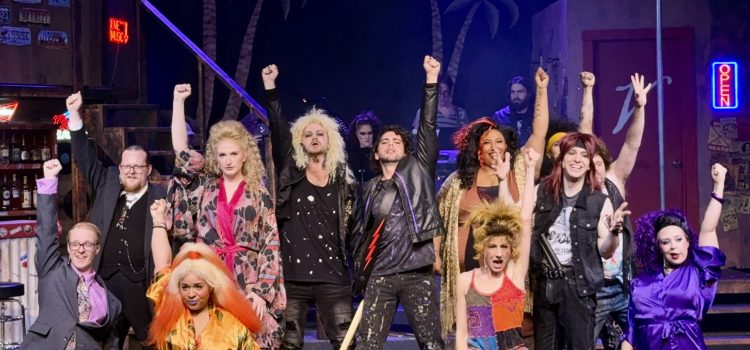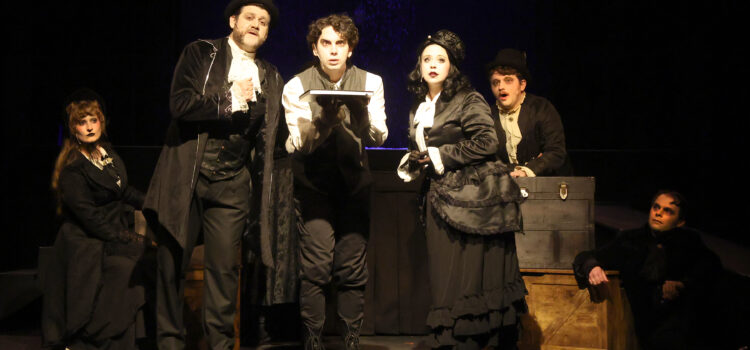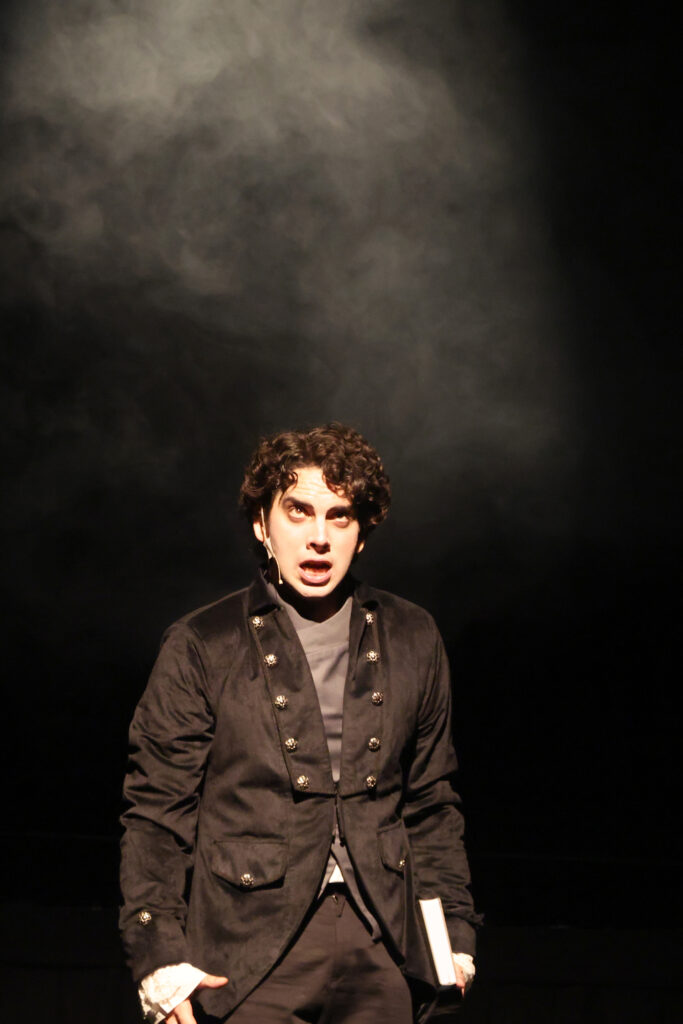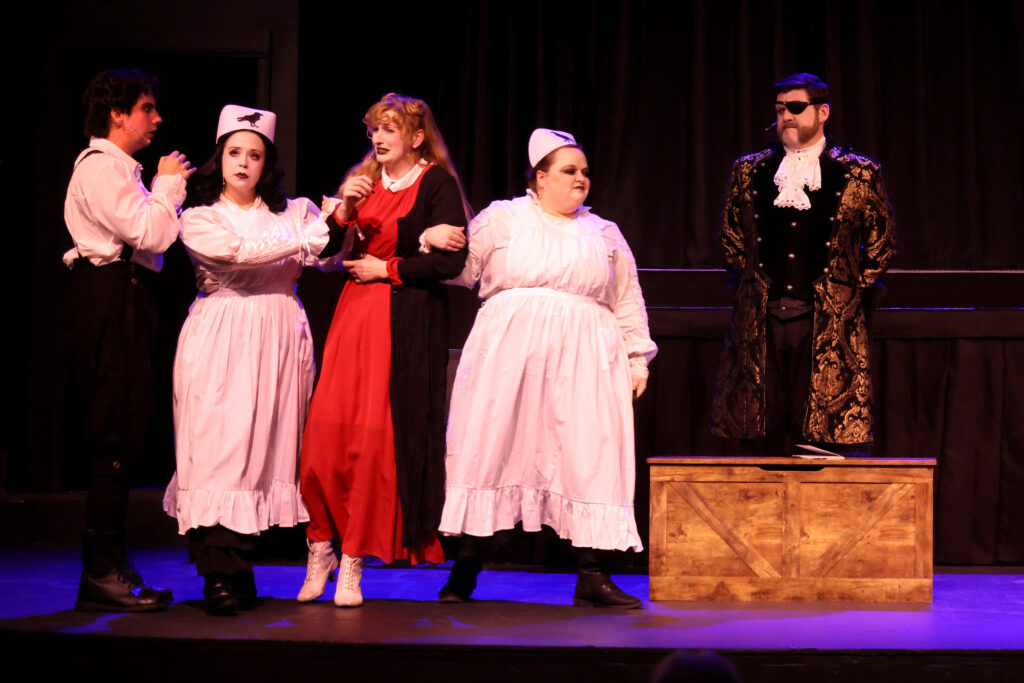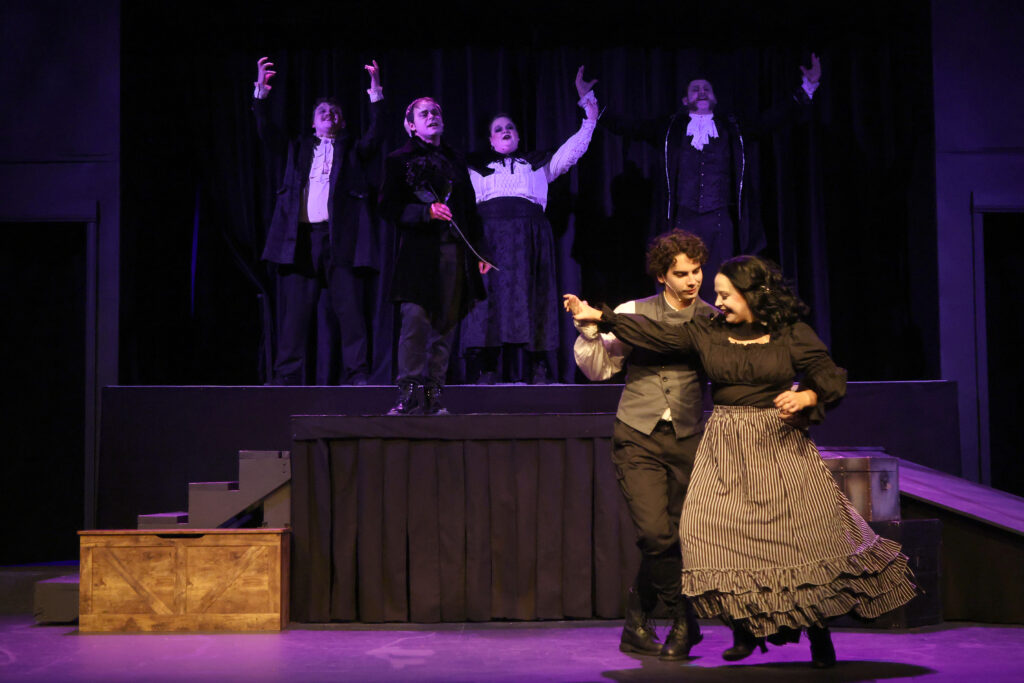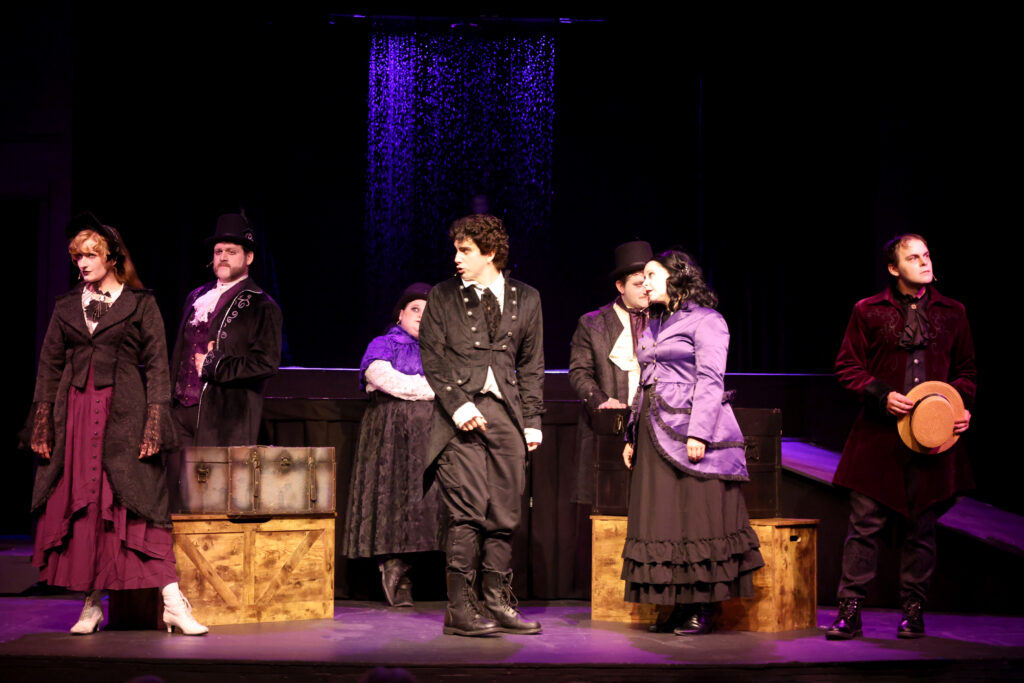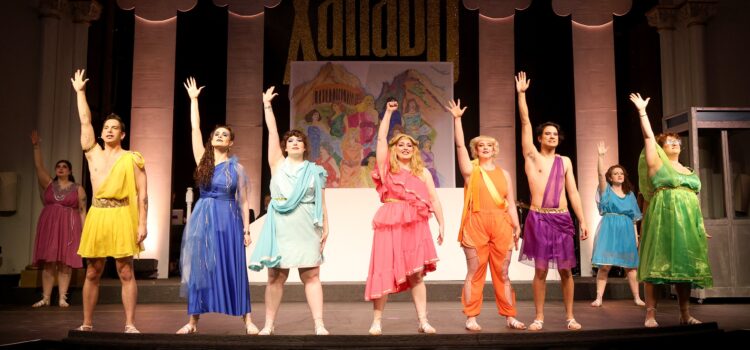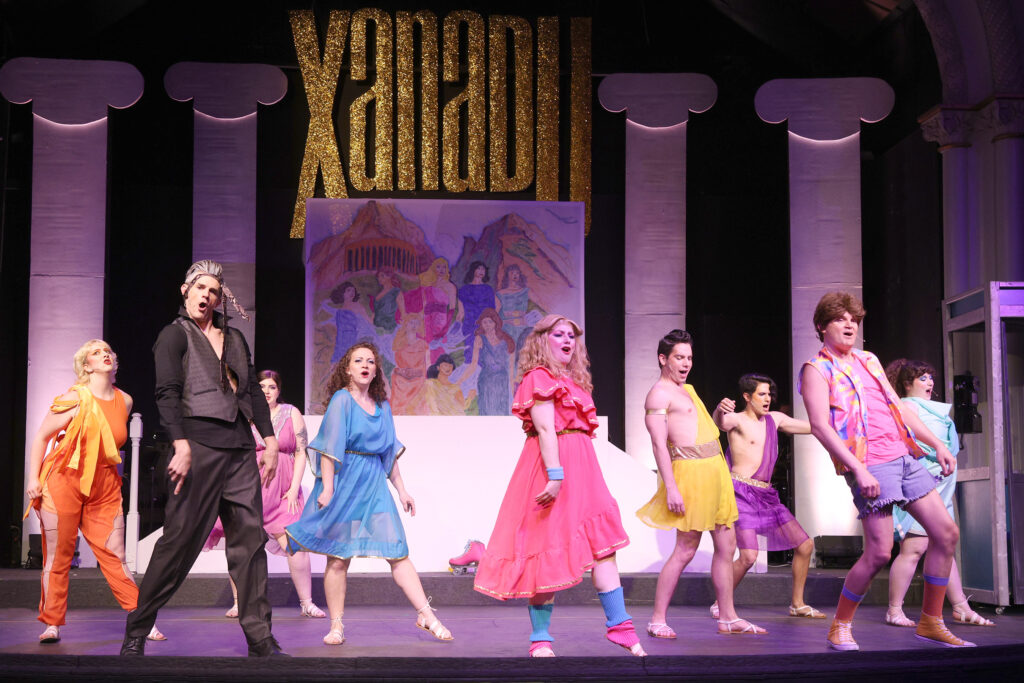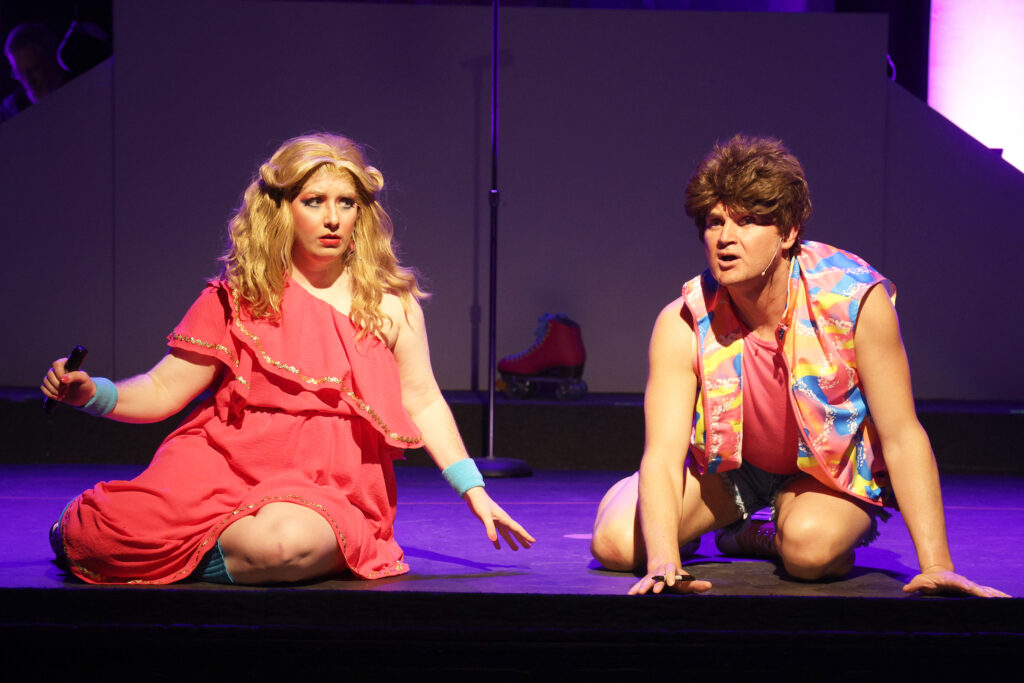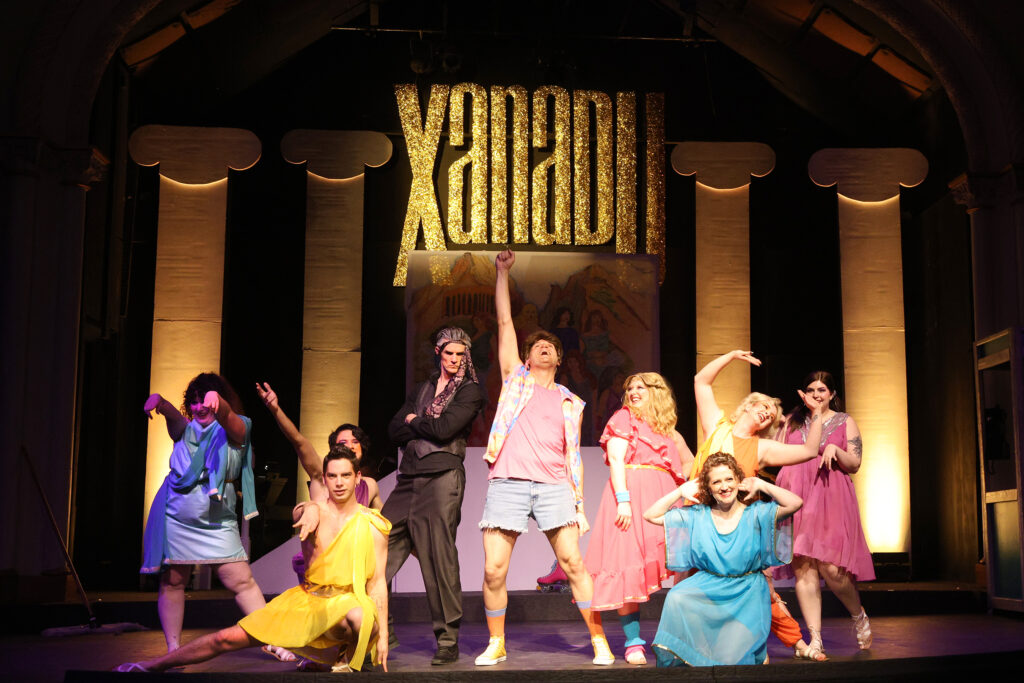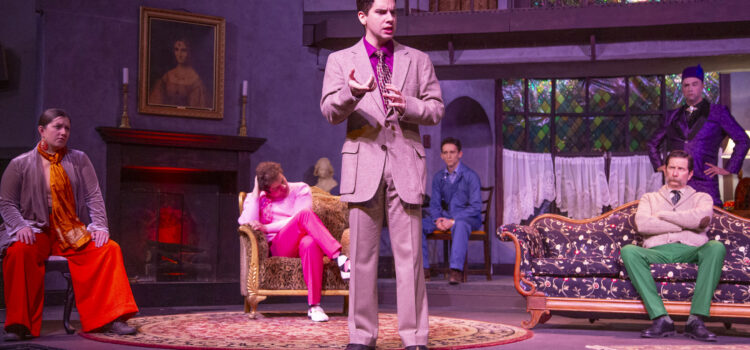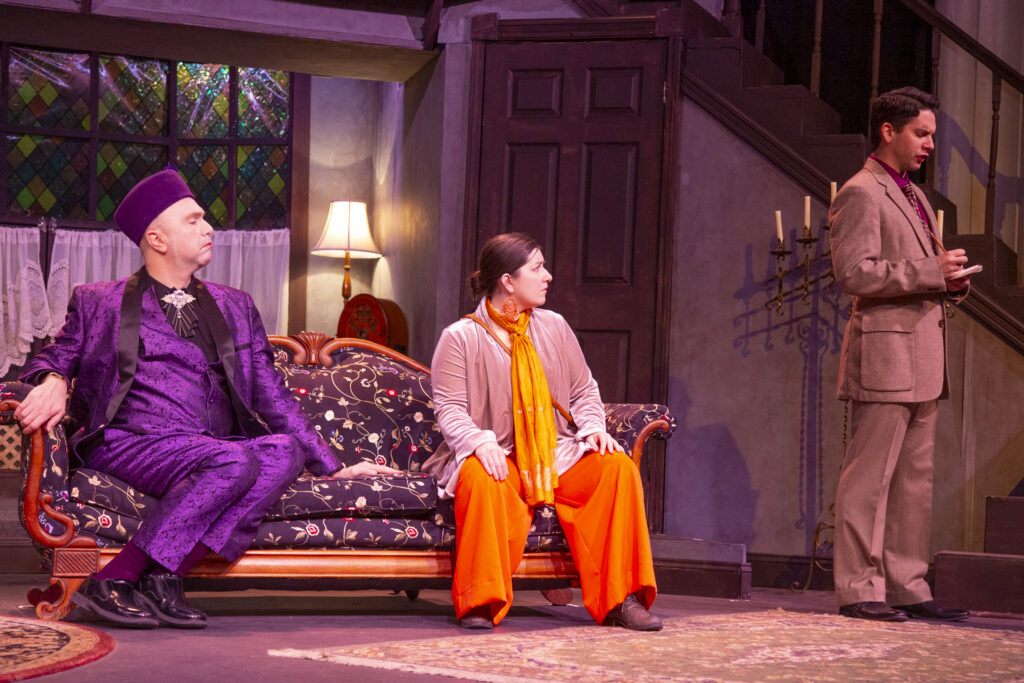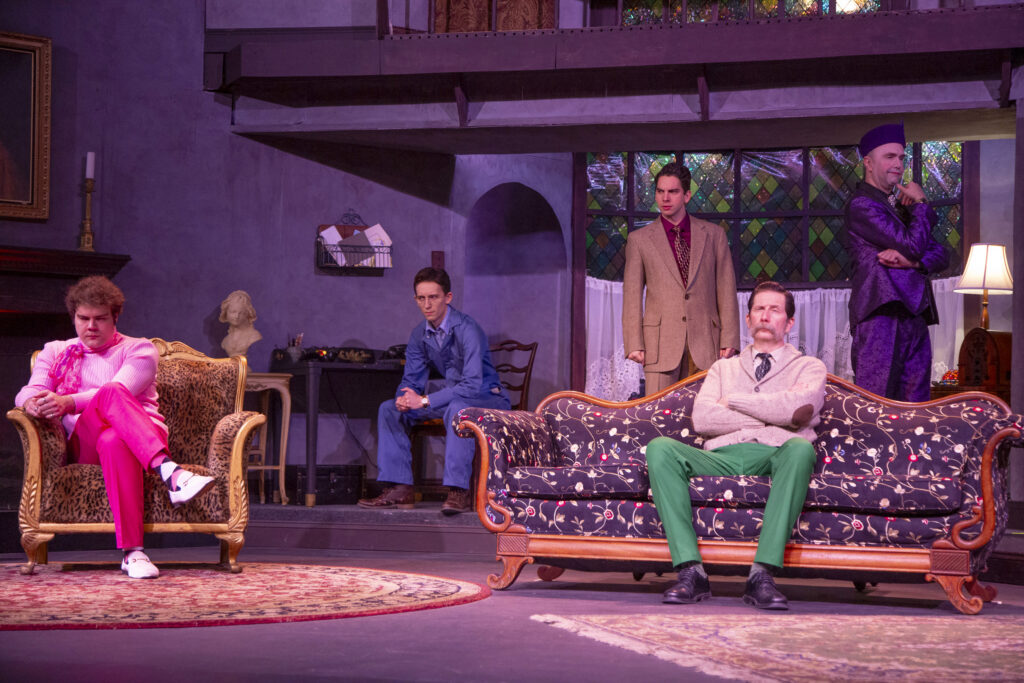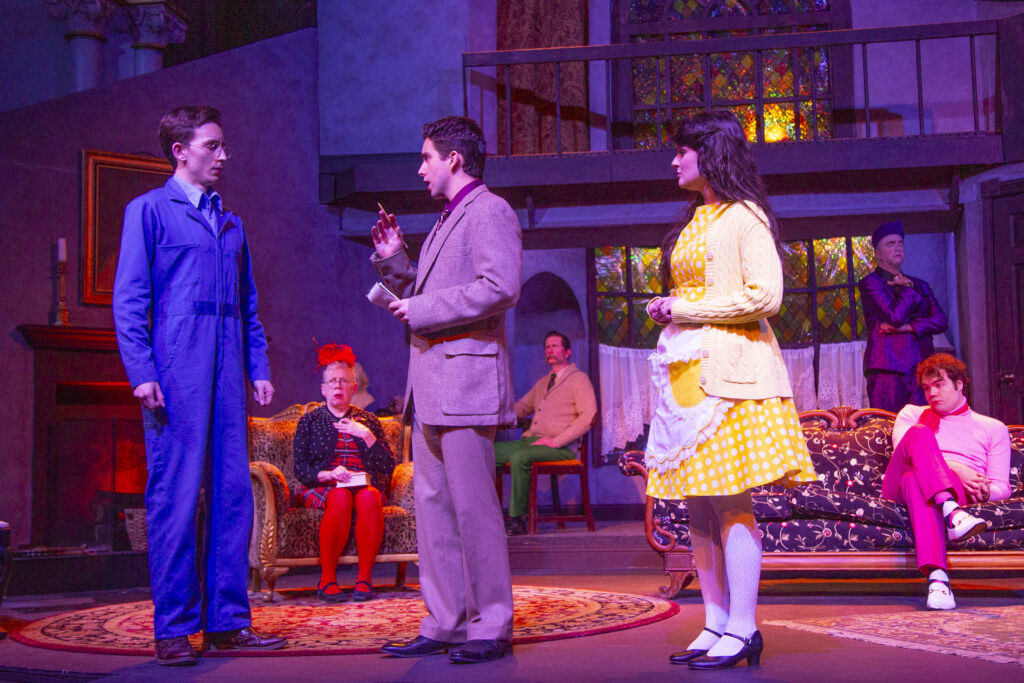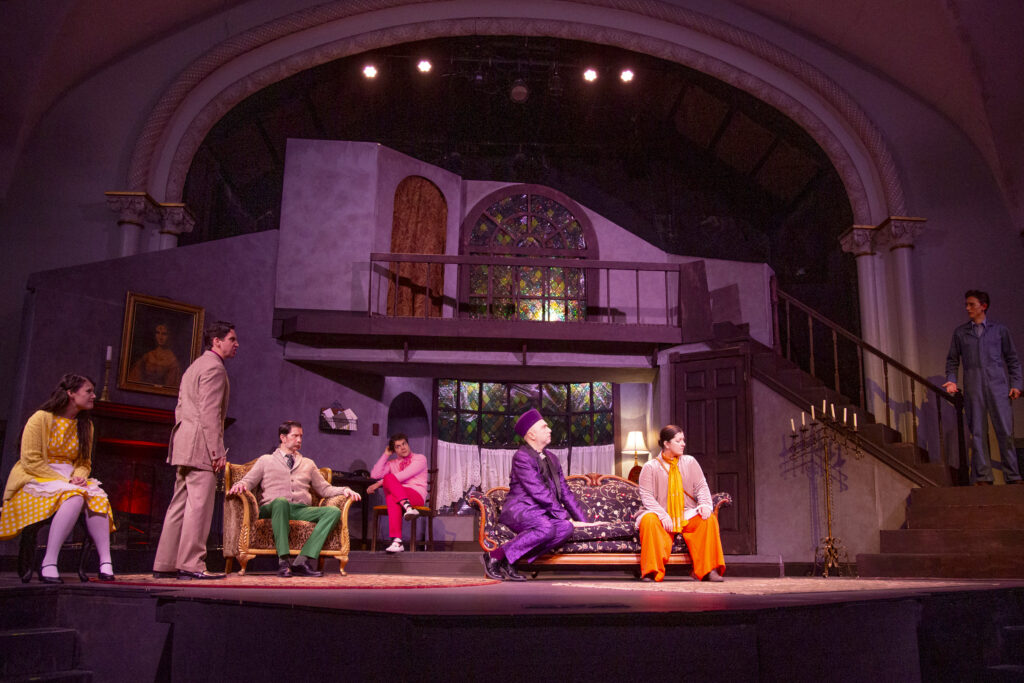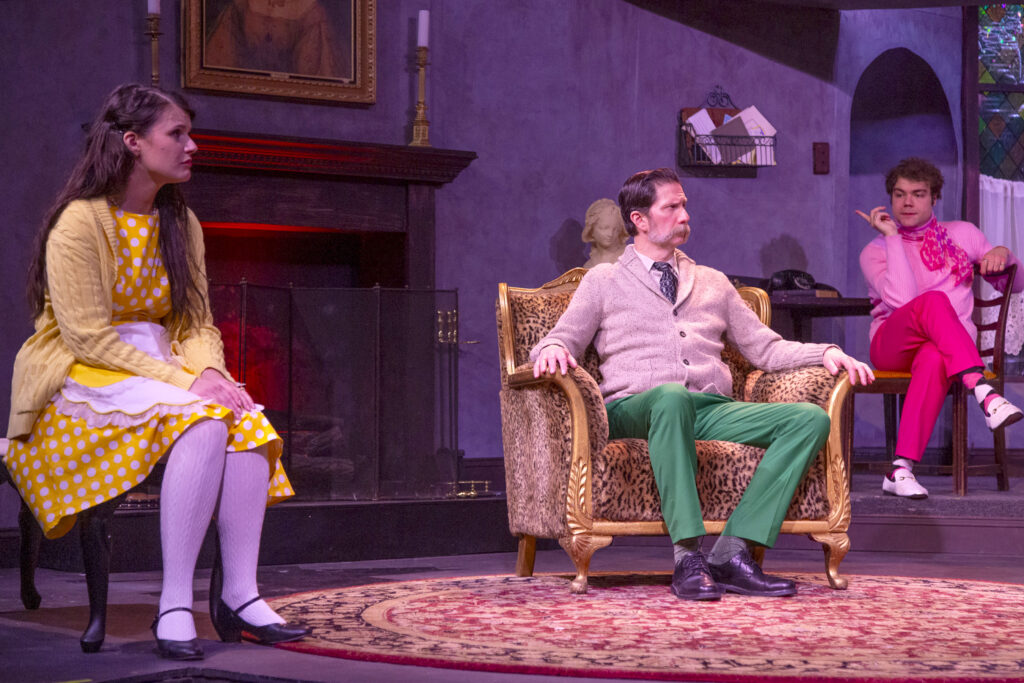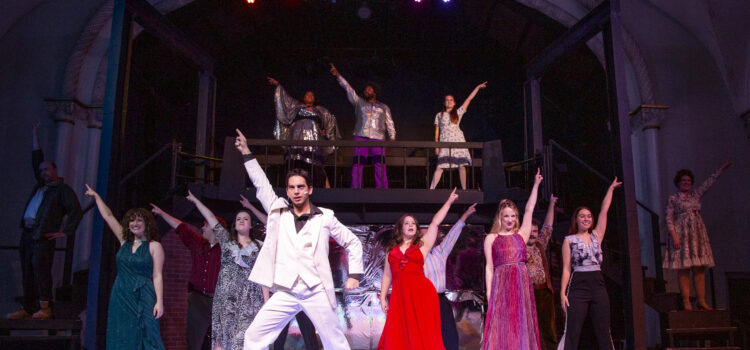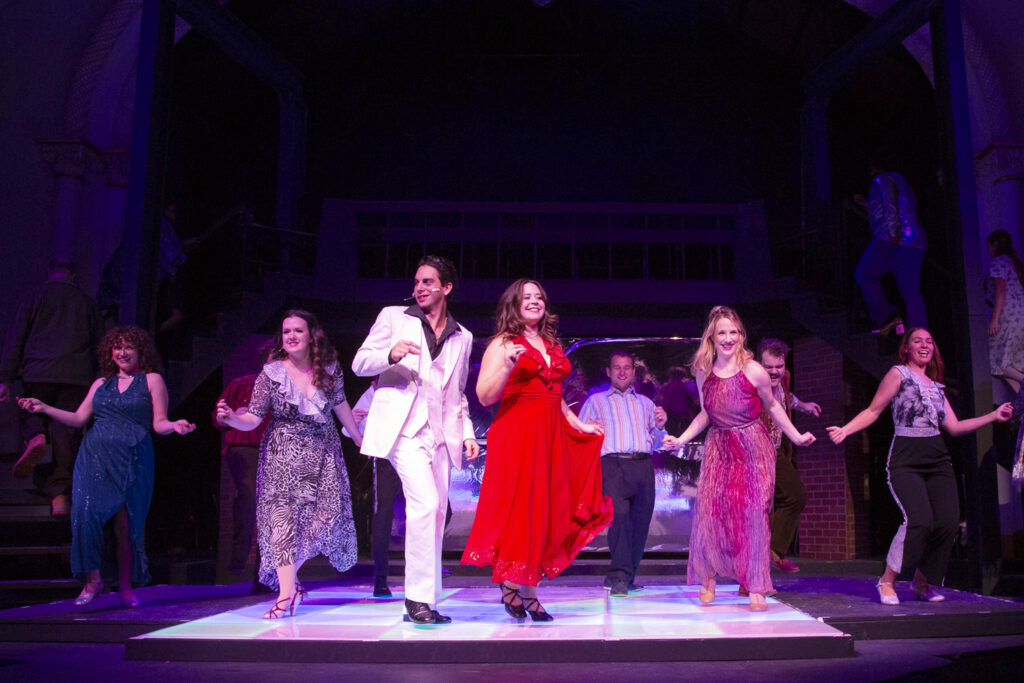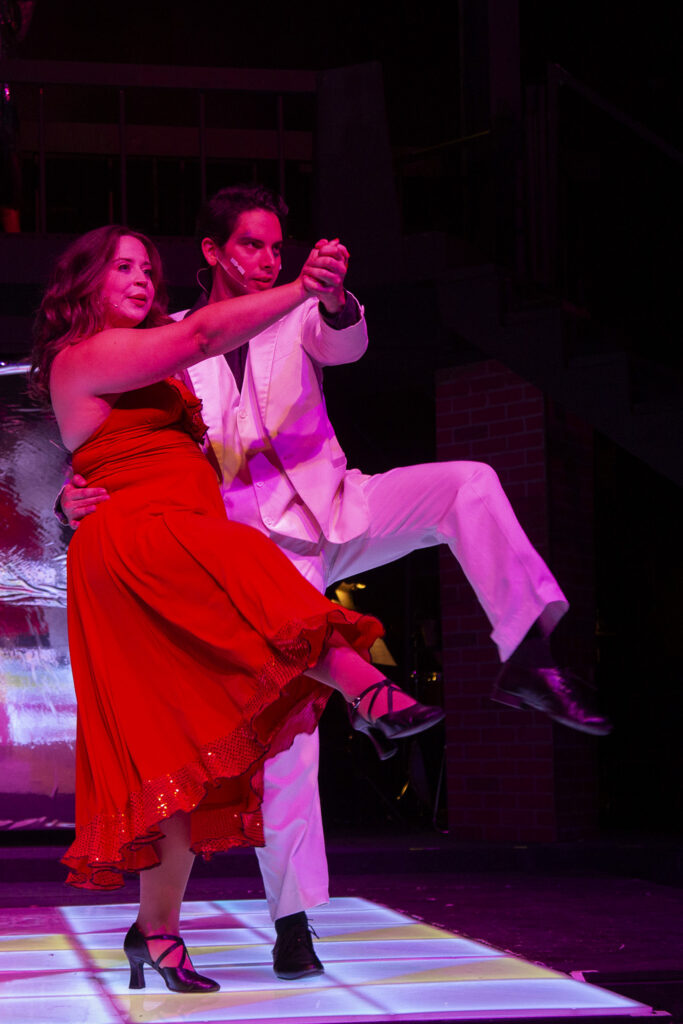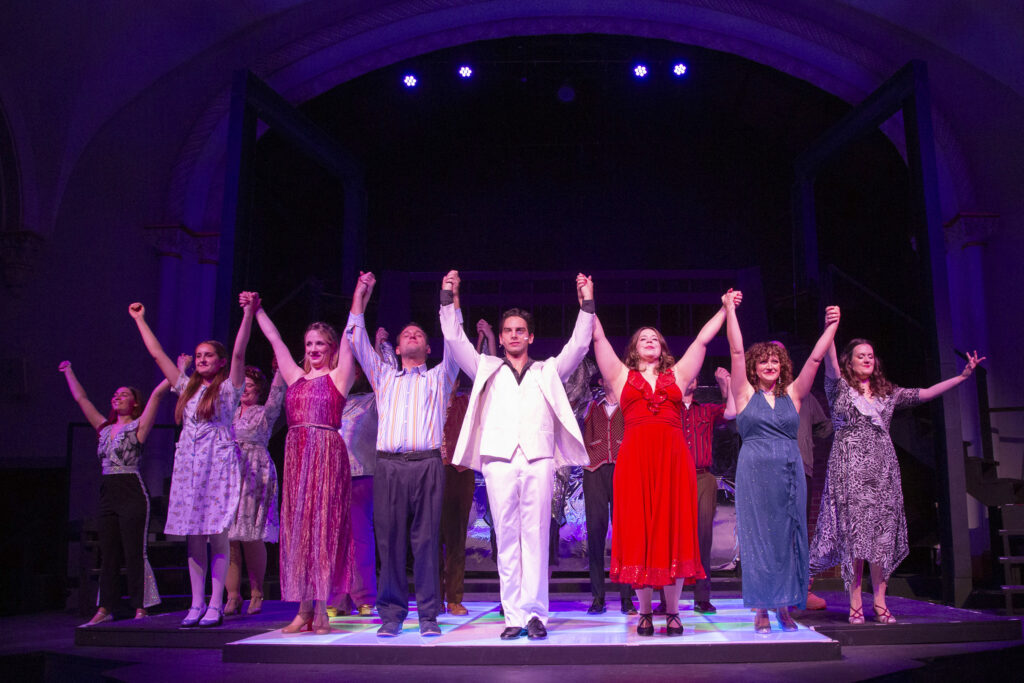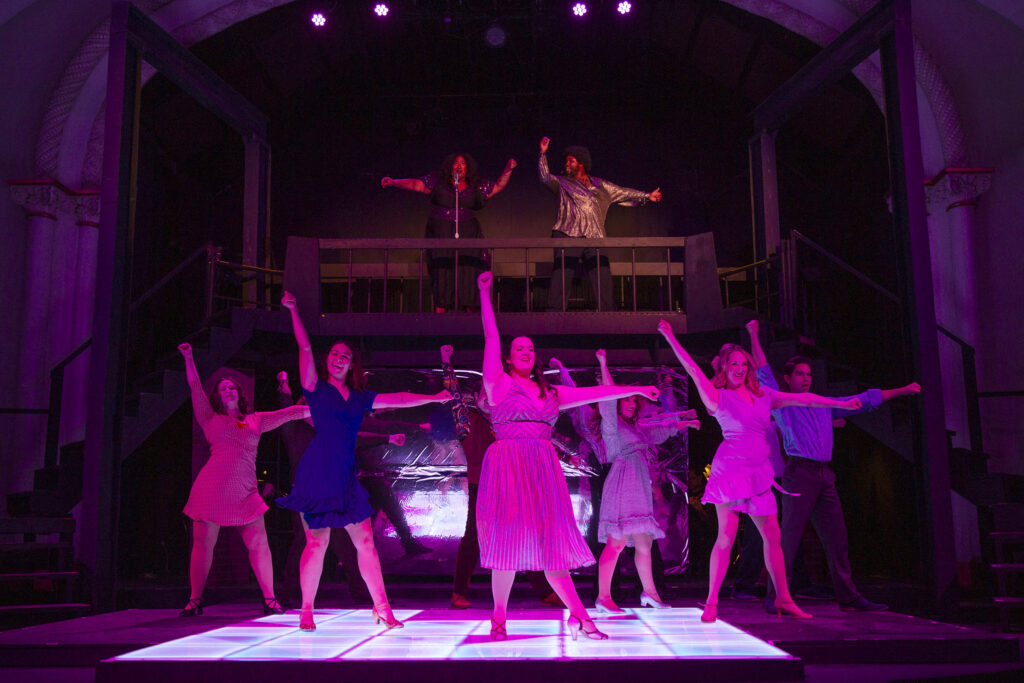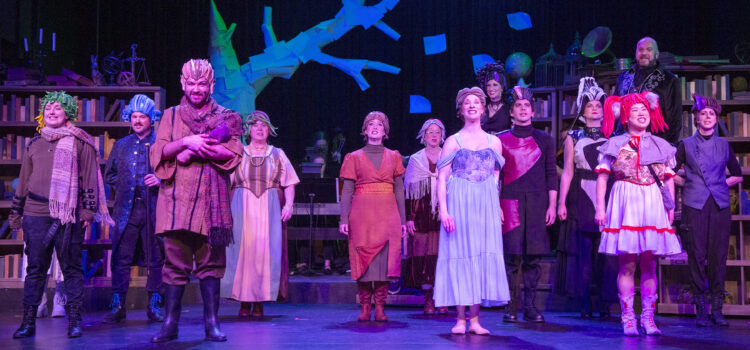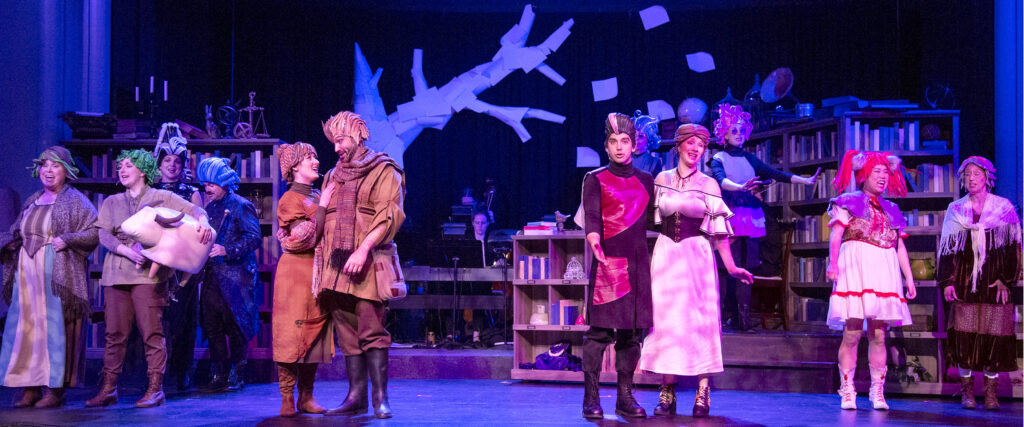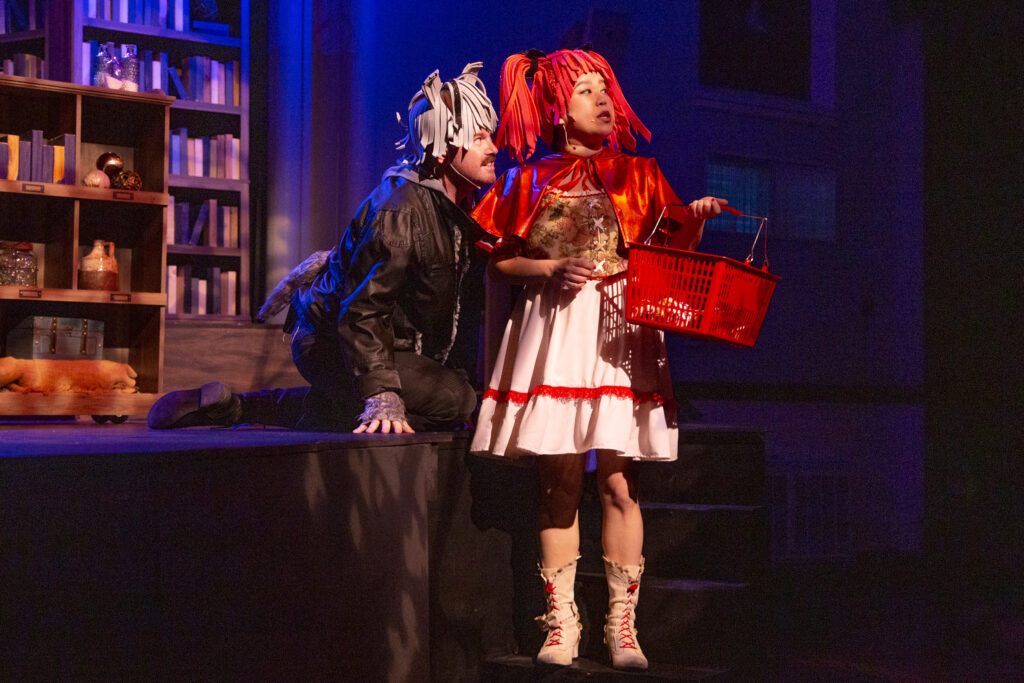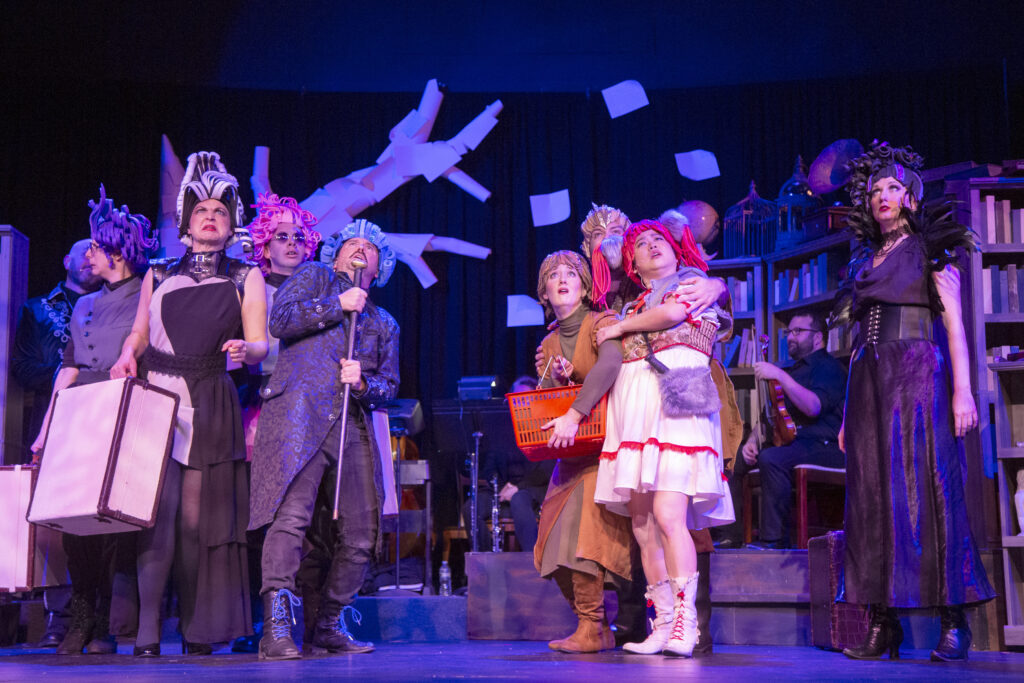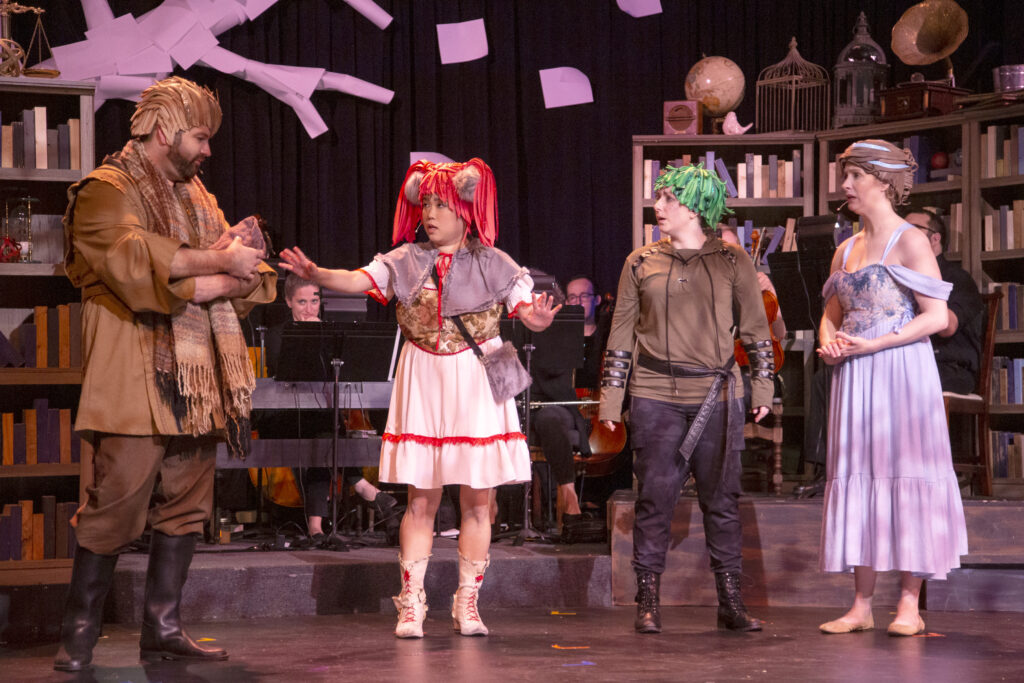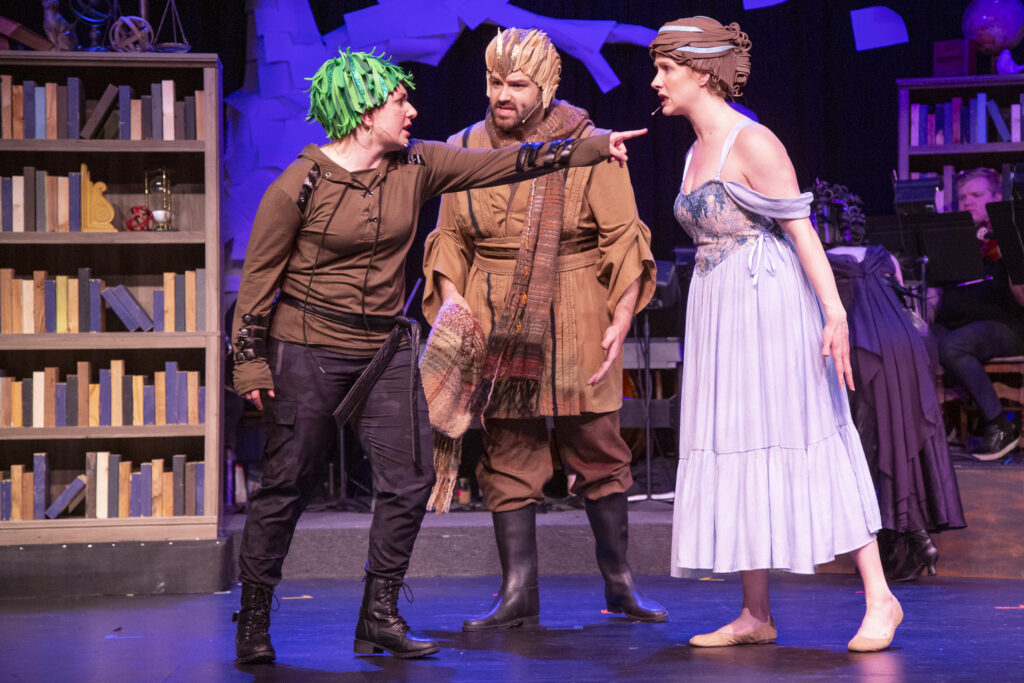By Lynn Venhaus
Get ready to rock! Fans of 1980s rock ‘n roll can rejoice – they’ll be able to hear the catchy melodies of head-banging heavy metal hair bands in the delightful jukebox musical “Rock of Ages” presented with brio by Stray Dog Theatre.
Go ahead, wave your phone and sing along to those earworm choruses. If you have as much fun as the exuberant cast does performing this high-spirited, energetic mega-mix tape bonanza, you will have nothing but a good time.
Without missing a beat, this cast of characters salutes the glory days of guitar-driven music in heavy rotation on MTV, set in a Sunset Strip music club that’s an epicenter of rock-star hipness.
The time and place are The Bourbon Room, 1987. You will soon be amused by the distinctive vintage fashions and hairstyles, from leather and acid-washed jeans to neon colors and aerobics wear, accessorized by mullets, perms, feathered bangs, teased hair and fluffy blow-outs, all volumized by many cans of hairspray.
The authentic big hair looks were crafted for each character, with many wearing wigs designed with a terrific eye by Sarah Gene Dowling. Rock god Stacee Jaxx’s bleached-blond mop even had dark roots showing from underneath his teeny rhinestone-bedazzled cowboy hat.
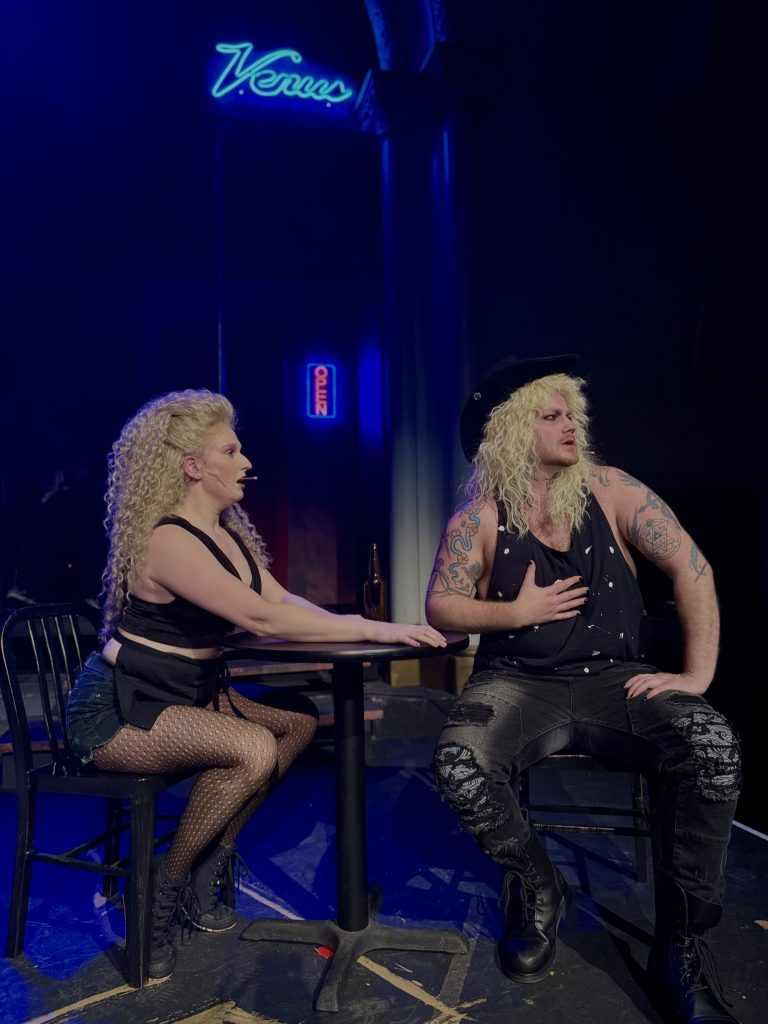
Costume designer Colleen Michelson found a treasure trove of retro looks, with the women looking like they were in Pat Benatar music videos and the guys emulating roadies backstage at Van Halen concerts. They stayed in the hard rock lane, not expanding to punk or new wave, to suit the music.
Everybody involved in the show just clicked – the cast, the band, the backstage crew, and the creatives, all unified by director Justin Been’s vision and light-hearted approach.
A surprise smash hit that ran on Broadway for six years, debuting in 2009 and closing in 2015 after 2,328 performances, “Rock of Ages” garnered five Tony Award nominations, including Best Musical.
On tour, it played to enthusiastic crowds at the Fox Theatre in 2012, 2013 and 2019, eager to indulge in a cheeky, cheesy and irreverent blast from the past. Its first two stops that I attended in St. Louis were raucous celebrations of that golden era that pumped up the crowd.
But Tower Grove Abbey’s stage allows for a more intimate feeling, an opportunity for sincere interactions while the house band on stage is shredding guitar licks and demonstrating their technical skills.

Led by music director Mallory Golden on keyboards, Jonathan Beck and Johnny Reitano play guitars, M. Joshua Ryan is on bass, and Jake Luebbert on percussion. The music fills the house but doesn’t overpower the singers.
Much like the clever way the songs of ABBA were woven through two acts of the global hit “Mamma Mia!”, some of classic rock’s biggest bands allowed their power ballads and rock anthems to be used as the soundtrack – including Bon Jovi, Foreigner, Journey, REO Speedwagon, Poison, Styx, and Twisted Sister, with arrangements and orchestrations by Ethan Popp. There are more than two dozen hits incorporated into the very slim plot.
Naturally, the show-stopping upbeat and joyous finale is none other than Journey’s 1981 “Don’t Stop Believin,’ the cultural phenomenon that is now officially the “biggest song of all time,” (so says Forbes because it’s an 18-time platinum-certified single and holds the record for the most digital downloads of the 20th century.)
But the show is no amateur karaoke night. It features some of the best vocals you’ll likely hear on local stages all year. As their scorching solos indicate, Drew Mizell and Dawn Schmid soar — especially his “Oh Sherrie” by Journey and “I Wanna Rock” by Twisted Sister, and her “Harden My Heart” by Quarterflash..
Their harmonies are well-integrated in their duets, especially supergroup Damn Yankees power ballad “High Enough” and Survivor’s “The Search is Over.”
It’s a testament to their talent and vocal prowess that you feel like you are hearing some of these songs in a new and meaningful way, and wow, can they belt. One of their heartfelt medleys is Warrant’s “Heaven,” Extreme’s “More Than Words” and Mr. Big’s “To Be with You.”

The story by Chris D’Arienzo is silly, but it doesn’t matter if it’s as predictable as Axel Rose’s arrogance and a “Dynasty” catfight between Joan Collins and Linda Evans because of its nostalgic pull.
Throwing a wrench into this made-for-each-other couple is Stacee Jaxx, a caricature of the egomaniac rock star, whose moves on Sherrie will lead to all sorts of problems. Clayton Humburg, giving off major swagger and cool-guy wannabe vibes, knows how to play the role leaning into its absurdity. He is not the sharpest tool in the shed, particularly when under the influence.
The trio team up for enjoyable renditions of Foreigner’s “Waiting for a Girl Like You” and “I Want to Know What Love Is,” plus Bon Jovi’s “Wanted: Dead or Alive,” and a blend of Asia’s “Heat of the Moment” with Joan Jett and the Blackhearts’ “I Hate Myself for Loving You.”
Comic relief comes in the form of German developers Hertz (Jacob Wilkinson) and his son Franz (Luke A. Smith), who want to take over the block to redevelop the area and are met with fiery resistance by activist Regina and her cohorts.
Regina is a firecracker played by Sarah Polizzi, whose flair for broad over-the-top comedy fits well here. She’s a daffy disruptor with good intentions. She and Franz connect, and that is one funny coupling, especially when he sings Pat Benatar’s “Hit Me with Your Best Shot.” She also leads the ensemble in Twisted Sister’s spirited rebel yell “We’re Not Gonna Take It.”

Jaded club owner Dennis Dupree, played by the ever-reliable Jeffrey Wright, is a street-smarts guy who has seen some things and knows some things, and rocks a sweet mullet. He’s a good match with his loyal sound guy, scene-stealer Lonny, who is portrayed by the breakout star in his Stray Dog debut, Bradley Bliven.
Bliven is charming and very funny in the dual role of narrator and secondary lead character, which features a bromance between Dennis and Lonny where they sing REO Speedwagon’s “Can’t Fight This Feeling” as a hilarious duet.
An appealing aspect of the show is that Lonny can mock the era with self-deprecating humor while offering a running commentary on what’s happening, breaking the fourth wall in a way that gets big laughs. And in today’s lingo, is very meta in its awareness.
He opens the show, with the ensemble’s lively take on Quiet Riot’s cover of “Cum on Feel the Noize” (oh, the misspellings of these titles!), then leads into David Lee Roth’s post-Van Halen “Just Like Paradise” and Poison’s “Nothin’ but a Good Time” with Dennis and Drew too.
The Velvet Room is an adjacent men’s club with Jade Anaiis as a soulful Mama Justice, the wise and benevolent earth mama to her girl workers. She sings Def Leppard’s “Pour Some Sugar on Me” with Sherrie and Lonny.
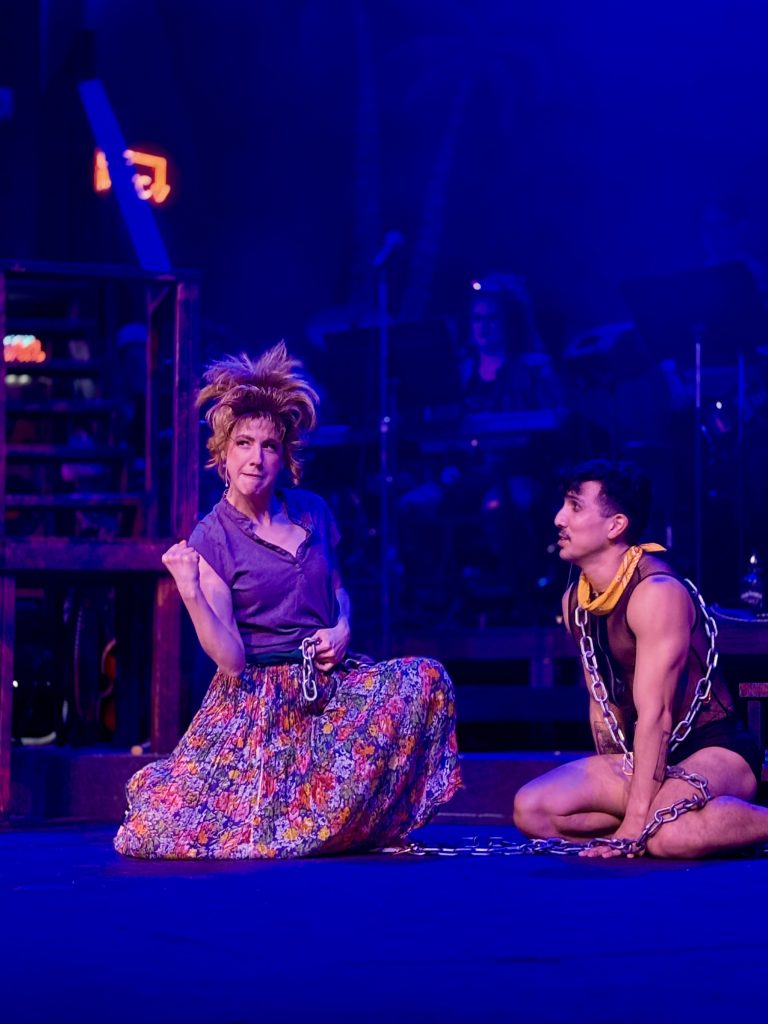
The versatile ensemble features Sara Rae Womack as Waitress #1, Corrinna Redford as Ja’Keith Gill, and Ruben Medina-Perez as Joey Primo.
The company kicks it up a notch for their vigorous group numbers, including the first act closer “Here I Go Again” by Whitesnake and second act opening “The Final Countdown” by arena rockers Europe.
As he always does, choreographer Mike Hodges wonderfully captures the time-capsule dance moves and the theatrical poses of those popular aerobics’ videotapes.
Rob Lippert created a lived-in atmosphere in his effective scenic design, cleverly adding height where it was needed, and the staging was enhanced by lighting designer Tyler Duenow’s illumination.
Whether ‘80s music is your jam, you lived through the decade or just enjoy a party-like atmosphere with a non-stop hit parade of jukebox heroes, “Rock of Ages” is a whole lotta fun and packed with many performance highlights.
Few things in life are as mood-lifting as impromptu sing-alongs with a room full of strangers, all singing out with glee (and not realizing you know the lyrics already!), bobbing your heads and smiling with great joy. Rock on!
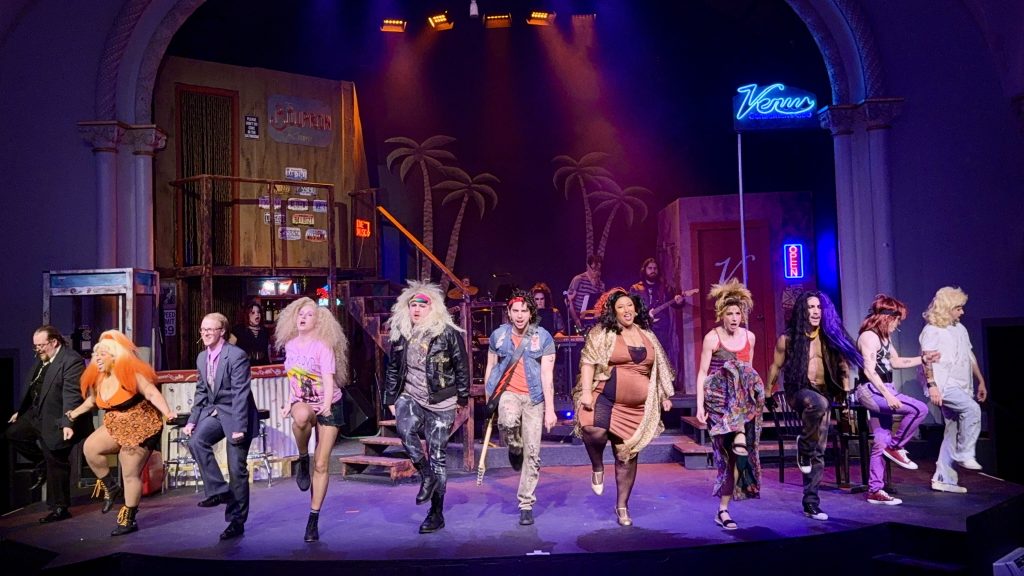
Stray Dog Theatre’s production of “Rock of Ages” is being presented April 3 to April 26, with performances Thursday, Friday and Saturday at 8 p.m., and special matinees on Sundays, April 6 and 13 at 2 p.m. All performances take place at the Tower Grove Abbey, 2336 Tennessee Avenue, St. Louis. The show’s run-time is 2 hours and 15 minutes, with a 10-minute intermission, and is for mature audiences. For tickets or more information, visit www.straydogtheatre.org.

Lynn (Zipfel) Venhaus has had a continuous byline in St. Louis metro region publications since 1978. She writes features and news for Belleville News-Democrat and contributes to St. Louis magazine and other publications.
She is a Rotten Tomatoes-approved film critic, currently reviews films for Webster-Kirkwood Times and KTRS Radio, covers entertainment for PopLifeSTL.com and co-hosts podcast PopLifeSTL.com…Presents.
She is a member of Critics Choice Association, where she serves on the women’s and marketing committees; Alliance of Women Film Journalists; and on the board of the St. Louis Film Critics Association. She is a founding and board member of the St. Louis Theater Circle.
She is retired from teaching journalism/media as an adjunct college instructor.

